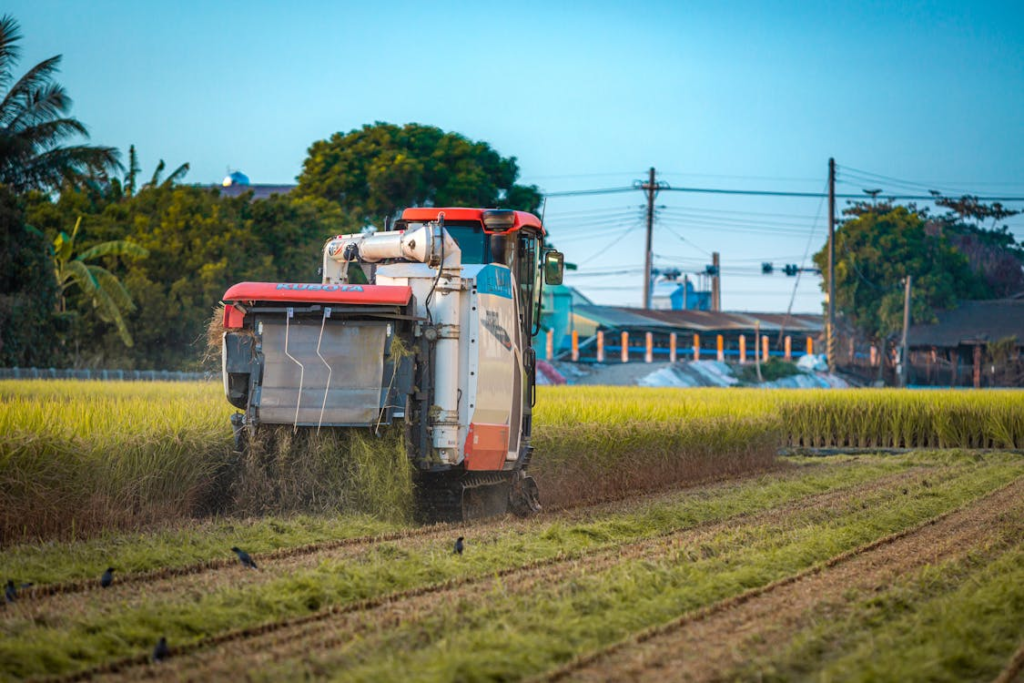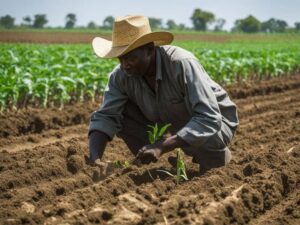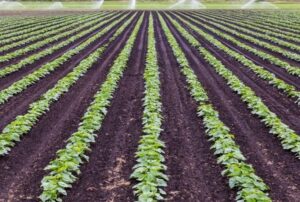Top 5 Climate Smart Agriculture Practices to Boost Sustainable

Climate smart agriculture (CSA) is an innovative approach that combines agricultural techniques with environmental stewardship. As climate change accelerates, the adoption of climate-smart agriculture practices is crucial for sustainable farming. Farmers worldwide are increasingly turning to CSA to mitigate climate impacts, ensure food security, and enhance the resilience of their crops. In this comprehensive guide, we will explore the top 5 climate-smart agriculture practices that can help farmers boost productivity while maintaining environmental health.
What is Climate Smart Agriculture?

Climate smart agriculture refers to a set of practices designed to make agricultural systems more resilient to climate change while reducing emissions and supporting sustainable food production. CSA integrates three key pillars:
- Productivity: Improving the efficiency of farming systems to increase yields.
- Adaptation: Adjusting farming practices to cope with climate change effects.
- Mitigation: Reducing greenhouse gas emissions from agricultural activities.
Farmers using climate smart agriculture aim to address both the immediate and long-term challenges posed by changing weather patterns and increasing temperatures.
1. Integrated Crop and Livestock Management

One of the most effective climate-smart agriculture practices is integrating crops and livestock in a single farming system. This approach helps farmers manage their resources more efficiently while improving productivity and reducing emissions.
How Does Integrated Crop and Livestock Management Help?
- Nutrient Cycling: Livestock waste can be used as fertilizer, reducing the need for synthetic fertilizers, which contribute to greenhouse gas emissions. Crop residues can also feed livestock, creating a closed-loop system.
- Diversification: By combining crop production with livestock, farmers can diversify their income sources and reduce risks associated with climate variability. For example, if a drought impacts crop yields, livestock can provide an additional revenue stream.
- Soil Health: Livestock grazing can help maintain healthy soils. Rotational grazing and the use of manure as compost can enhance soil fertility and structure, increasing its water retention capacity.
Best Practices for Integrated Crop and Livestock Systems:
- Use rotational grazing to prevent overgrazing and improve pasture health.
- Apply composted manure to crops to reduce dependence on chemical fertilizers.
- Integrate trees and shrubs into grazing lands to provide shade and windbreaks, improving livestock welfare.
For more on sustainable farming practices, check out our step-by-step guide to starting your own organic natural farming journey.
2. Conservation Agriculture for Soil Health

Conservation agriculture is another climate-smart agriculture practice that focuses on preserving soil health while improving water retention and reducing erosion. This approach relies on minimal soil disturbance, maintaining a permanent soil cover, and practicing crop rotations.
Why is Conservation Agriculture Crucial for Climate Smart Agriculture?
- Reduced Soil Erosion: By avoiding tillage, conservation agriculture prevents the breakdown of soil structure, which can lead to soil erosion. This practice helps maintain soil health, ensuring that crops can thrive, even in challenging climates.
- Enhanced Water Infiltration: Soil covered by organic matter and mulch allows for better water infiltration. This is especially beneficial in areas prone to drought, as it improves soil moisture retention.
- Carbon Sequestration: By reducing soil disturbance, conservation agriculture allows for the sequestration of carbon in the soil, helping to mitigate the impacts of climate change.
Key Conservation Agriculture Practices:
- Use no-till or minimum-till techniques to protect soil from erosion.
- Practice crop rotations to break pest cycles and improve soil nutrient balance.
- Employ mulching to protect the soil and conserve moisture.
To learn more about how crop rotation can help improve soil health, check out our detailed article on advanced technology trends in modern farming.
3. Agroforestry: Combining Trees with Crops

Agroforestry is the practice of integrating trees and shrubs into agricultural landscapes. This method helps farmers combat the impacts of climate change, reduce deforestation, and increase farm productivity.
How Does Agroforestry Contribute to Climate Smart Agriculture?
- Carbon Sequestration: Trees absorb carbon dioxide, which helps mitigate the effects of climate change by storing carbon in their biomass and the surrounding soil.
- Improved Microclimates: Trees provide shade, reduce wind speeds, and increase humidity, creating a more favorable environment for crops to grow, especially in hot and arid climates.
- Biodiversity Enhancement: Agroforestry promotes biodiversity by creating habitats for various plant and animal species, which enhances the resilience of farming systems.
Practical Tips for Implementing Agroforestry:
- Plant trees on the edges of fields to act as windbreaks and protect crops from strong winds.
- Integrate nitrogen-fixing trees, like legumes, to improve soil fertility naturally.
- Use multi-strata cropping systems, where crops are grown under the canopy of taller trees, maximizing space and productivity.
Learn more about sustainable crop cultivation with our guide to growing wheat.
4. Precision Farming with Technology Integration

Precision farming is an innovative climate-smart agriculture practice that involves using advanced technology to monitor and manage agricultural activities. By utilizing tools like sensors, GPS, drones, and data analytics, farmers can optimize their use of resources, increase efficiency, and reduce environmental impacts.
Why Precision Farming is Essential for Sustainable Agriculture:
- Resource Efficiency: Precision farming helps farmers apply the right amount of water, fertilizer, and pesticides only where needed. This reduces waste and minimizes negative environmental impacts.
- Increased Yields: By using data to monitor crop health, farmers can make timely interventions that enhance yields and reduce the risk of crop failure.
- Lower Carbon Footprint: By reducing the use of inputs such as water, fertilizers, and pesticides, precision farming can lower the carbon footprint of farming operations.
Examples of Precision Farming Techniques:
- Use soil moisture sensors to optimize irrigation and reduce water wastage.
- Implement variable-rate technology (VRT) to apply fertilizers based on soil nutrient levels.
- Employ drones to monitor crop health and detect pests early, preventing pesticide overuse.
For insights into advanced technologies, read more about modern farming trends.
5. Water Management for Climate Resilience

Water scarcity is one of the biggest challenges faced by farmers due to climate change. Efficient water management practices are crucial for ensuring that crops receive the necessary hydration without wasting precious resources.
How Water Management Boosts Climate Smart Agriculture:
- Efficient Water Use: By using water-saving techniques, farmers can reduce water consumption while ensuring their crops receive adequate moisture.
- Improved Drought Resilience: Efficient water management practices help crops survive and thrive even during dry periods, contributing to the long-term resilience of farming systems.
- Enhanced Soil Health: Proper irrigation techniques, like drip irrigation, minimize soil erosion and help maintain soil structure.
Water Management Techniques:
- Implement drip irrigation systems to deliver water directly to plant roots, reducing evaporation and runoff.
- Use rainwater harvesting systems to collect and store water for dry seasons.
- Practice mulching around crops to retain soil moisture and reduce the need for frequent irrigation.
Check out our guide on the best crops to grow during winter farming for more on managing crops during water-stressed seasons.
Conclusion:
Incorporating climate-smart agriculture practices is essential for farmers who want to sustain their livelihoods while contributing to environmental sustainability. By adopting techniques like integrated crop-livestock management, conservation agriculture, agroforestry, precision farming, and efficient water management, farmers can adapt to the challenges posed by climate change and continue to produce food for future generations.
As climate change continues to affect global agricultural systems, climate-smart agriculture provides farmers with the tools and strategies needed to thrive. Embracing these practices not only enhances farm productivity but also ensures a sustainable future for agriculture and the environment.
Explore more on organic farming practices to start your journey towards sustainable agriculture.














Post Comment